It’s astonishing to know that dogs can not only be the reason behind the cause of allergies in humans, but they can also themselves suffer from dog allergies.
Allergies are known to be incurable, but the right knowledge about medication and avoidance of the source of an allergy can make their lives much better.
You must not get traumatized yourself as a dog owner, you should rather just understand that allergies are common both in dogs and humans and won’t make your dog go through any sort of existential crisis.
So, let me guide you on the common types of dog allergies.
Table of Contents
7 Common Types of Dog Allergies
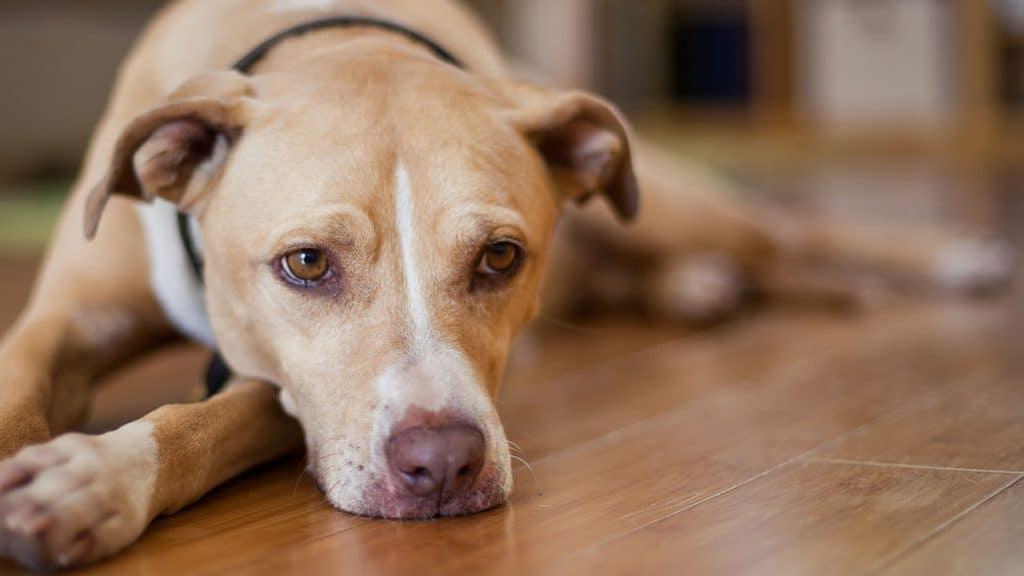
Generally, in humans, an allergy is caused due to our immune system hyper reacting with a daily substance like dust, gluten, fleas or pollen et cetera.
It can be in a similar way in dogs, it might not be due to similar substances but the trigger of allergies can be due to other substances in them.
1. Atopic Dermatitis
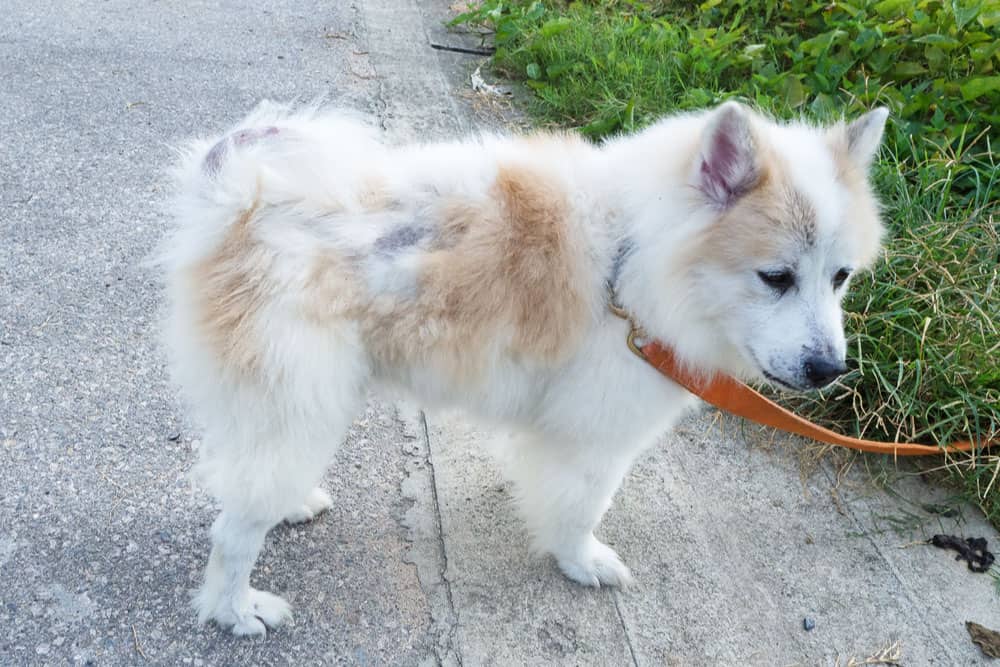
Atopic Dermatitis can be inherited from of allergy in dogs.
It is a condition where a dog’s body doesn’t accept the indulgence of pollen, grass, and trees, dust mites or mold spores.
The dog begins showing symptoms slowly maybe by just pollen grains initially and then as time elapses, other substances also cause allergic reactions.
You can detect signs of skin irritations around the eyes, armpits, stomach and anal area.
They can also be prone to ear infections.
Consulting a veterinarian is recommended, even though she would run certain blood tests results of which won’t cure it, as inherited allergies are incurable.
The vet may inject your dog with some steroids for short-term relief and prescribe some medication to lower the itching in the long-term.
2. Flea Allergy

The single most common form of allergies in dogs is the one due to blood-feeding fleas and at times, the reactive nature due to their saliva.
The worst part is it causes rashes or red bumps and spots at certain body areas due to flea bites.
The more dog is bitten, the more its condition worsens.
To reduce the suffering, steroids and antihistamines reduce the irritation.
But still, the best method would be a strict flea controlled environment.
There are many lotions and sprays available that repels fleas, you can consult your vet to guide you on what suits best.
3. Food Allergy

It is natural in some dogs to be allergic from various food elements, but what triggers an allergy majorly are chicken, beef, corn or wheat which are common ingredients in dog food.
The allergy tends to pop up in the form of skin abnormalities such as rashes, itching and red spots on the skin.
You can work with your vet in order to create a diet that’s created in order to find the culprit food element.
The veterinarian will provide you with a diet that will fulfill the need and slowly other food elements can be added in that food.
Just when your dog starts scratching its body excessively, you know what’s causing it and you can keep that food out of the bowl.
4. Seasonal Allergy

Just when you were into the misconception that seasonal allergies are more prominent in human beings, I would say dogs are equally prone and it’s not fun.
Even though, your dog might not show any signs of allergy throughout the year.
But during a particular season, he can be observed having rashes, irritated skin, loss of hair and boils at times.
Antihistamines are the most effective weapon against seasonal allergies.
Although, Benadryl works equally well.
But the treatment must be done under the supervision of the vet who knows the history and health aspects of your dog.
5. Home Allergy
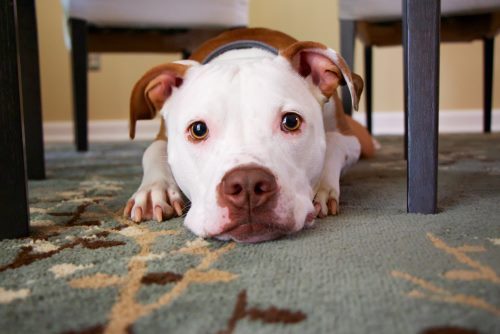
There is no doubt that many substances that are consumed at households are artificial and dogs can be reactive to those substances.
It will be difficult to detect the source of it which can be: dust and dust mites, air fresheners, perfumes and deodorants, cigarette smoke, fabric, and rubbers.
You can take precautions by observing carefully what particular substance is causing the problem and limit the usage.
You should immediately go to the vet if the cause of allergy is undetectable.
6. Prescription Drugs

Allergies can be unpredictable and it is disappointing to know that your pooch is allergic to medications that are going to heal him.
Prescribed drugs are the most basic way to cure certain ailments, but maybe the drug itself or an ingredient present in it can be reactive.
Even though, allergies due to medications can be a rare case scenario.
It shouldn’t be ruled out of the book while detecting the root cause.
If your dog is showing allergic reaction while he’s on prescribed drugs, make a log on what all medications are provided and show the log to the vet while consulting him next time.
7. Medicated Shampoos
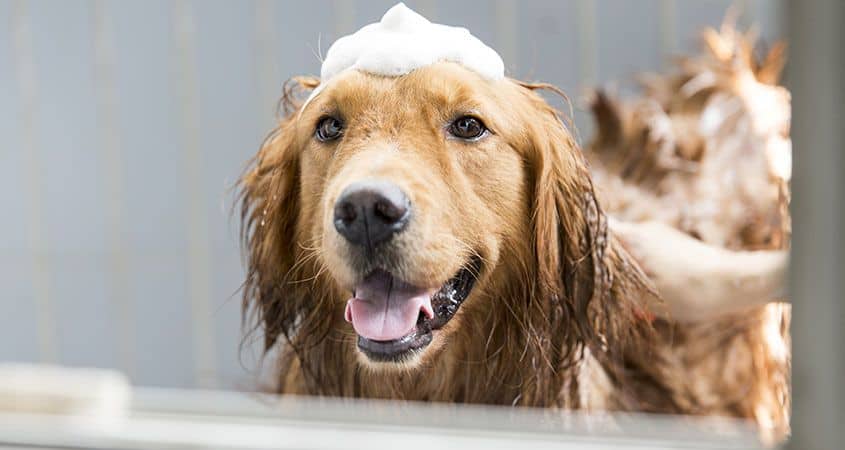
Some medicated dog shampoos can cause a minor allergic reaction in dogs, the reason being they promote the production of histamine that causes irritated skin and rashes.
Reactions due to shampoos occur shortly after exposing their bodies to it and at times due to over-usage.
Symptoms can be hives, rashes, bald patches, and swelling.
An appropriate dosage of Benadryl can help avoid the symptoms.
But one must stop the usage of medicated shampoos if this is the case.
You can always switch to natural-based products for dogs that work equally well.
Diagnosis For Dog Allergies
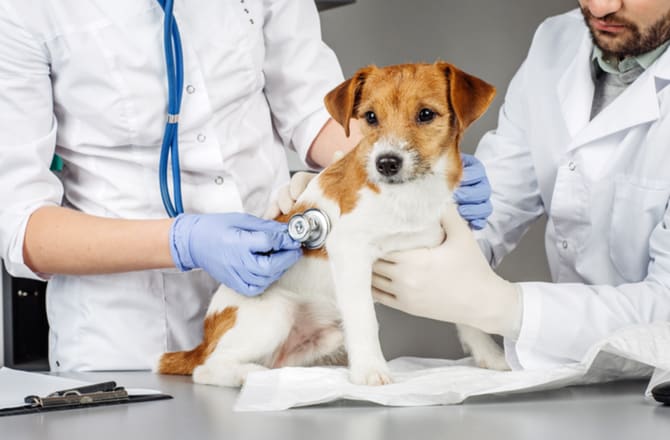
The first step towards treating allergies in your dog would be diagnosing them.
The dog may have to go through many tests like skin test, blood test, saliva test and also a diet elimination food for a few days, depending on the type of allergy.
The tests shouldn’t be avoided and should be undertaken as soon as you detect excessive itching, or coughing or skin abnormality in your dog.
1. Skin Test
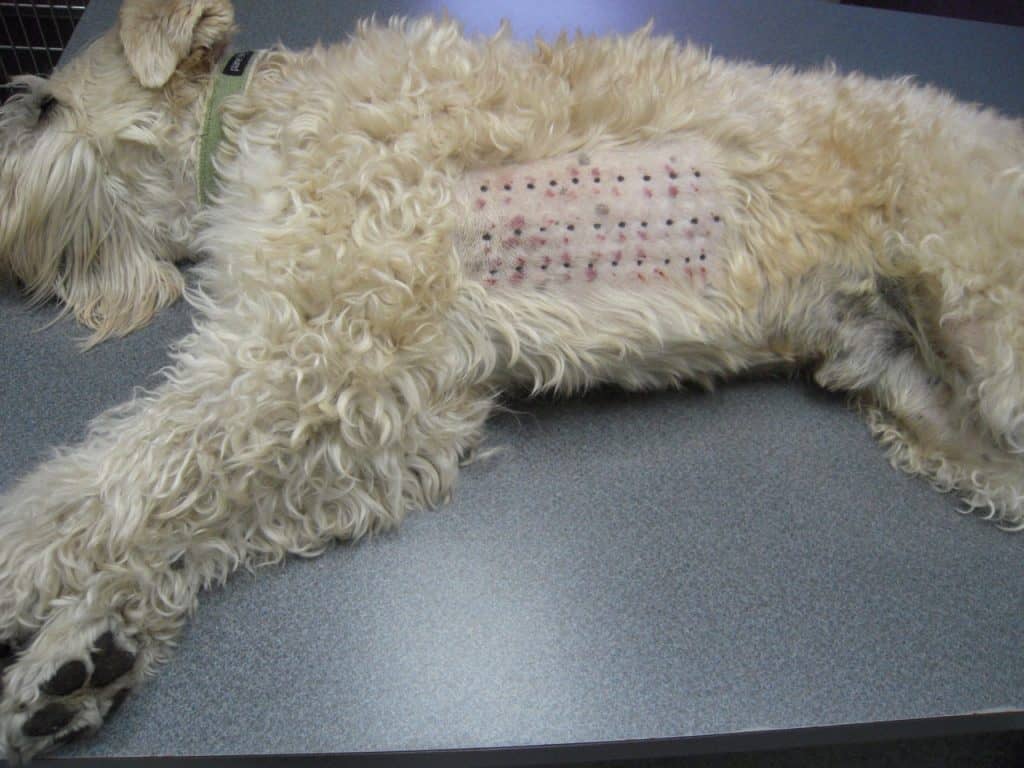
If you have any experience in skin allergies and the test you go through, which is known as the intradermal skin test.
The same test is used while detecting allergies in dogs.
Injections will be necessary but the process won’t be traumatic for your dog.
The skin test is done by injecting different allergens in the body and observe if there is a reaction.
15 minutes past this test, the vet would be able to tell you what is causing allergic reactions in the first place.
2. Blood Test
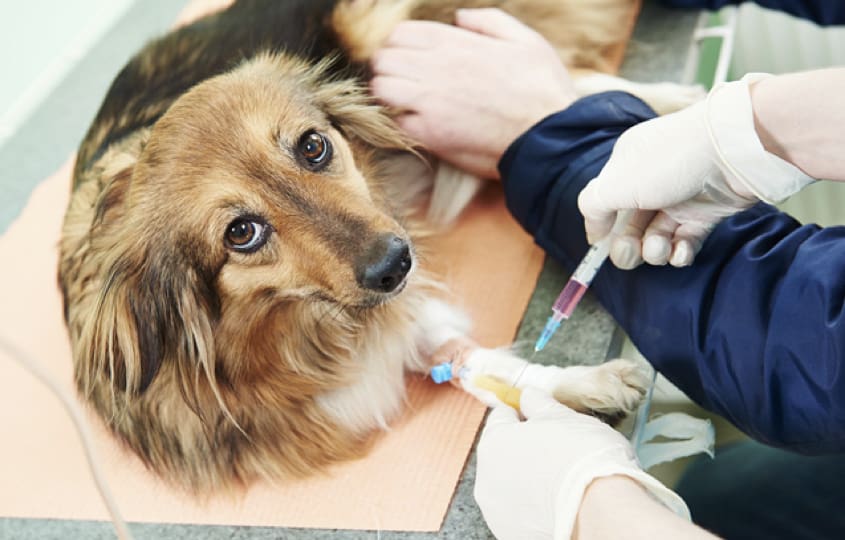
The blood is the strongest and most common form of testing the dog’s blood triggered by allergens.
The vet may use the following tests:
- RAST Test (Radioallergosorbent)
- ELISA Test (Enzyme-linked Immunosorbent Assay)
Once the blood samples are tested in a lab, it can be easily detected for allergies due to dust, pollen, molds or environmental parasites.
But skin and household-based allergies are not very accurately detected with blood tests.
3. Saliva Test
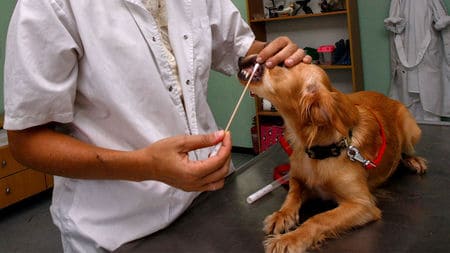
A saliva test is the most basic form of test and can be incorporated at your home.
Even though, saliva tests are known more for food sensitivities and intolerances rather than allergies.
You can still use a saliva test kit after consulting with the vet, just in case you need to take some immediate steps.
4. Food Elimination Diet:
This a simple, yet powerful way of detecting a food allergy.
The Food elimination diet is a process where the diet of your dog is peeled off by layers to bare essential and then ingredients are added back gradually until a reaction occurs.
It has been found out that up to 10 percent of all dogs suffer from allergies.
Ways To Treat Allergies

Treatment of allergies will always be conditional, depending on the type of allergy your dog is going through.
Some treatments may require medication, whereas some might require you to undertake some kind of environmental management.
In some cases, it can be both.
So, consult your vet and learn about the process thoroughly.
Here are some basic ways to treat your dog’s allergy:
- Antihistamines and steroids might relieve your dog from itching in the short term. But they are not recommended for the long term, as they involve health risks.
- Immunotherapy is a good way to make your dog less allergic, but it doesn’t usually work for food allergy.
- Installing air filters would be better, in order to eliminate airborne allergens, air conditioning works amazingly by impeding the growth of culprits like mold.
- Dust mites can be eradicated by washing your bedspread and your dog’s bed with hot water every once a week. If your companion is allowed on the furniture, put a towel or sheet that can be washed in hot water.
- Try to avoid walks with your dog when pollen levels are highest, which is, during morning or afternoon. Wipe your dog with damp hand towels, in order to eliminate pollen from the body.
- To avoid dryness of skin for allergic dogs after bath time, start using hypoallergenic dog shampoos and creme rinse only.
- A strict flea control program should be cultivated, the dog’s bed should be filled with cedar in order to inhibit flea residence.
- Avoid your dog spending too much time in humid areas, such as storeroom, basement, bathroom or laundry rooms.
About Immunotherapy

Flea and Environmental allergies are the ones that have been said to be the most common in dogs as per doctors.
The existence of flea allergy depends on the location since fleas do not survive well in the southwest.
Flea allergy is the most common there.
In environmental allergy, the immune system often overreacts to the allergens present in the surroundings which cause a variety of results such as itching, skin inflammation, skin infections, and ear infections.
Immunotherapy is still one of the oldest and best treatment options for dogs, that actually changes and controls the body’s reaction to allergens.
But it requires a long-term commitment from the owner’s side.
About 60 – 80 percent of dogs with environmental allergy respond well to immunotherapy.
Immunotherapy also ensures the use of other medications is eliminated.
To see the results of immunotherapy you must continue it for a year.
Medication must also get along with immunotherapy for the first year.
Conclusion

Allergies are something that can be permanently deleted, neither in dogs and nor in human beings.
Allergies are just a simple reaction that occurs in our body as an indication of the fact that certain external agents are unacceptable.
Dogs can be allergic too and it’s not their fault.
Nothing they can do about it other than being involved in constant scratching or maybe coughing.
But it’s nothing to break your head on, with constant care and preventive measures – your dog will be as healthy and normal like his other four-legged mates.
Do you have experience with your pooch having dog allergies?
If yes, what else did you do in order to provide him relief from the allergy?
Kindly share your views and experiences in the comments below!
Share the link with owners whose dogs are suffering with allergies.
Happy Petting To You Guys!













[…] a list of dog allergies along with their various […]
[…] Sneezing, accompanied by eye and nasal discharge, and loss of hair are seen in dogs. Treatment options include a controlled diet, modifying the environment, and taking some medications. To know in detail about specific allergies, click here. […]
[…] Suggested: Common Types of Dog Allergies And What To Do About Them? […]